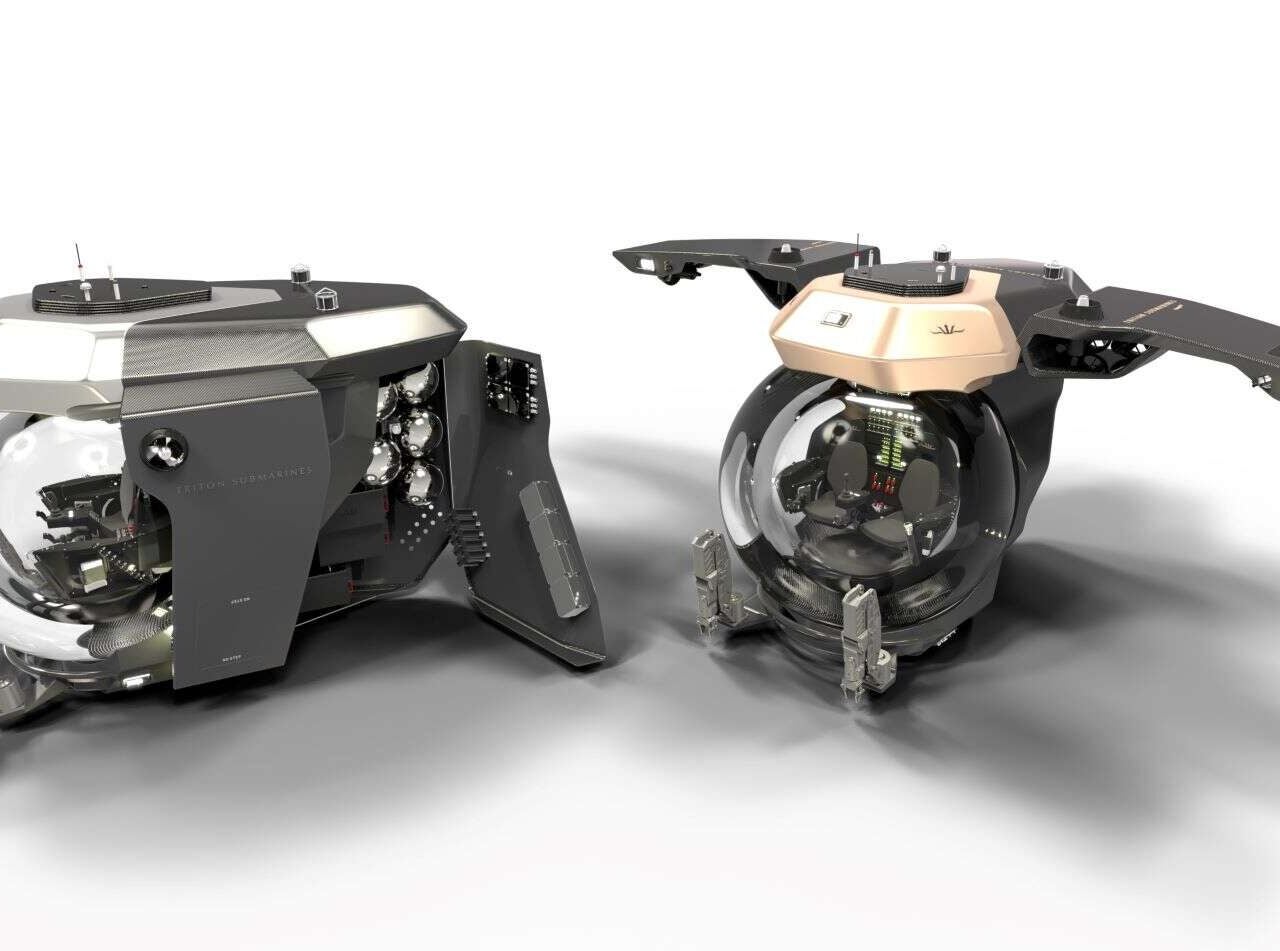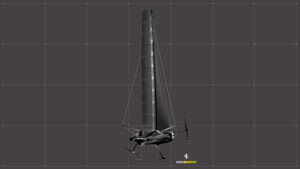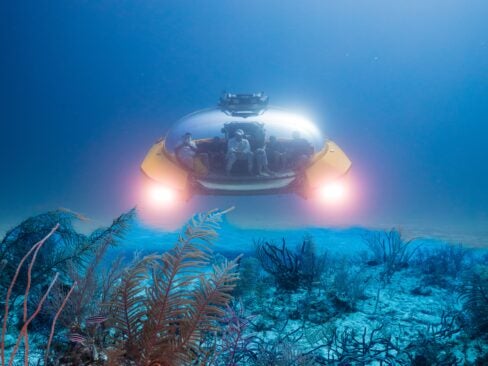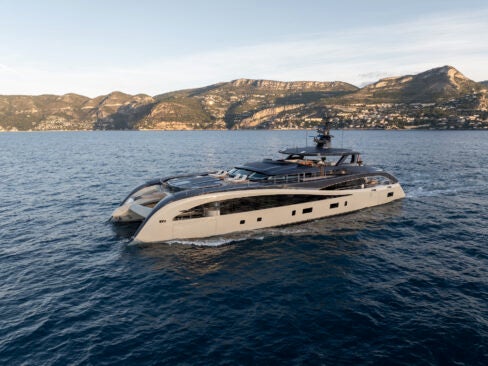Triton Submarines, one of the world’s leading manufacturers of personal submersibles has unveiled the design for its ground-breaking new model, the Triton Titanic Explorer. Set to be the deepest diving acrylic manned submersible ever produced, the two-person vessel has the capability to dive to ocean depths of 13,123ft.
Named after the historic 2019 mission which saw a team of international deep-sea explorers take a Triton sub to the bottom of the North Atlantic to survey the wreck of the RMS Titanic, the Triton Titanic Explorer will be able to dive even deeper than the fateful ship’s final resting place of 12,600ft.
Florida-based Triton Submarines is a leading manufacturer of personal submarines designed for yacht, hospitality and cruise ship deployment as well as vital scientific research and film production. The company’s latest submarine is capable of up to 12 hours of exploration and features the largest and thickest acrylic sphere ever produced on a submersible. It is also the first to benefit from a brand-new feature which the company has called ‘gull wings’.
The cutting-edge retractable wing design will raise the vessel’s propulsion up and away from the seabed, ensuring that delicate species and free-floating objects remain undisturbed. Particularly useful for film crews and presenter-led-productions, cameras placed at the wingtips allow for an ideal external view from which to film the submersible and its occupants as well as the marine environment surrounding the 9.8ft high vessel.
[See also: Style and Sustainability: The New Sunreef 80 Eco Catamaran]
Explaining the thinking behind the revolutionary wing design, Triton Submarine’s principal design engineer John Ramsay said: “When we started thinking about the design of the Triton Titanic Explorer, we knew the unique visual capability of being the deepest diving acrylic hulled sub would need to be countered by the darkness at depth.
“What’s the point of going down if you can’t see anything when you get there? So, we developed the Gull Wings to counter just that. They are equipped with lighting and cameras so you can essentially light your subject from one angle while shooting from the other, and even adjust the position of the wings for dexterity, control and maneuverability. It’s a remarkable advancement, particularly for filmmakers, researchers or scientists who are using the vehicle.”
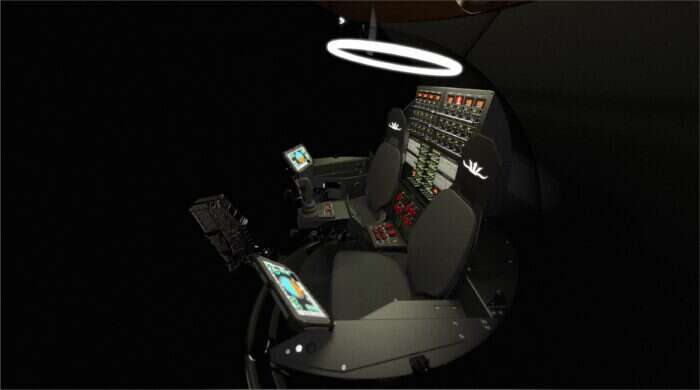
Interior rendering of Triton Submarines’ new Titanic Explorer / ©Dark Ocean Design
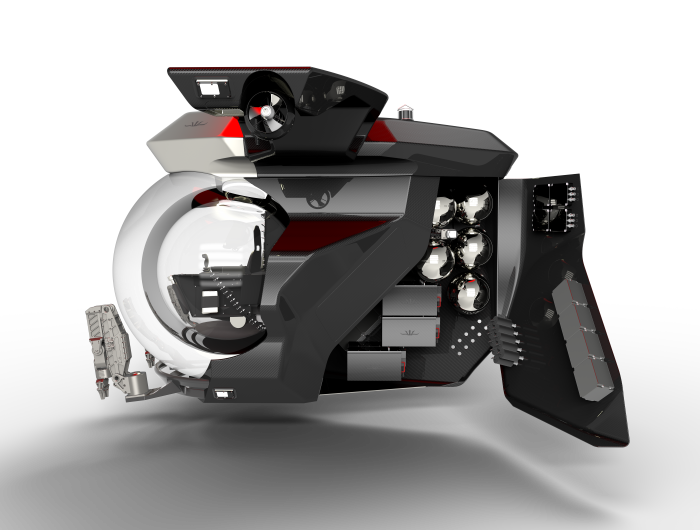
The Titanic Explorer has an enormous 500 kg payload capacity / ©Dark Ocean Design
The thick acrylic sphere which accommodates the Triton Titanic Explorer’s passengers is another industry first. Until now, the possibility to descend over 13,000 ft has not been possible but Triton’s engineers have created an exceptionally strong transparent hull to act as a barrier between the submarine’s occupants and the deep ocean’s crushing pressures.
Once immersed in water, the sphere is designed to be virtually invisible providing astounding panoramic views as it explores unchartered territory. The crystal clear visuals generated through this advanced acrylic material can be witnessed on the BBC’s award-winning Blue Planet II series, where the footage shot from interior cameras within a Triton submarine was near indistinguishable from that of the footage shot externally.
[See also: Step Inside the Black Pearl Yacht]
Another technological advancement is The Triton Titanic Explorer’s ‘silent glide’ feature which allows gentle, sweeping turns, ideal for following, but not disturbing, moving marine life. Without using thrusters, the Triton submarine can maintain a fixed heading, track an object or glide towards a target in descent. When activated, the thrusters deliver additional controls to counteract the strong currents that can be found around marine habitats and shipwrecks.
Triton co-founder and president Patrick Lahey said: “We have a proven track record of developing the safest and most reliable submersibles on the market, but we are always challenging ourselves to figure out what’s next. We’ve found it’s not just about going down in a submersible, it’s about the user experience and the things we can do once underwater.
“You see this in the remarkable innovations introduced on the Triton Titanic Explorer and you will see it in some of Triton’s soon-to-be-announced configurable models as well. People are starting to think about submarines and ocean exploration in a whole new way and we’re excited to bring that technology to them.”
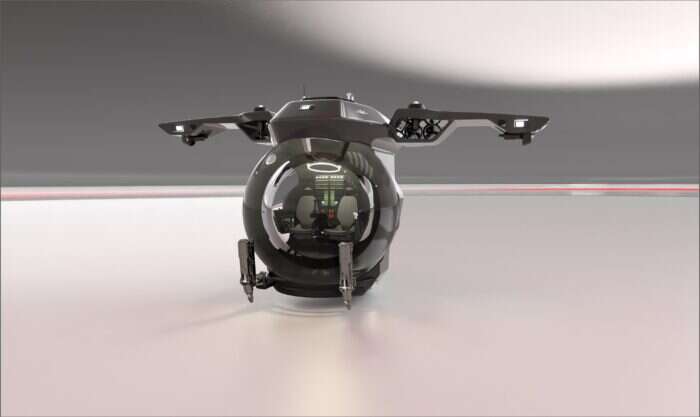
The cutting-edge gull wing design will raise the vessel’s propulsion up and away from the seabed so as not to disturb delicate marine life / ©Dark Ocean Design





